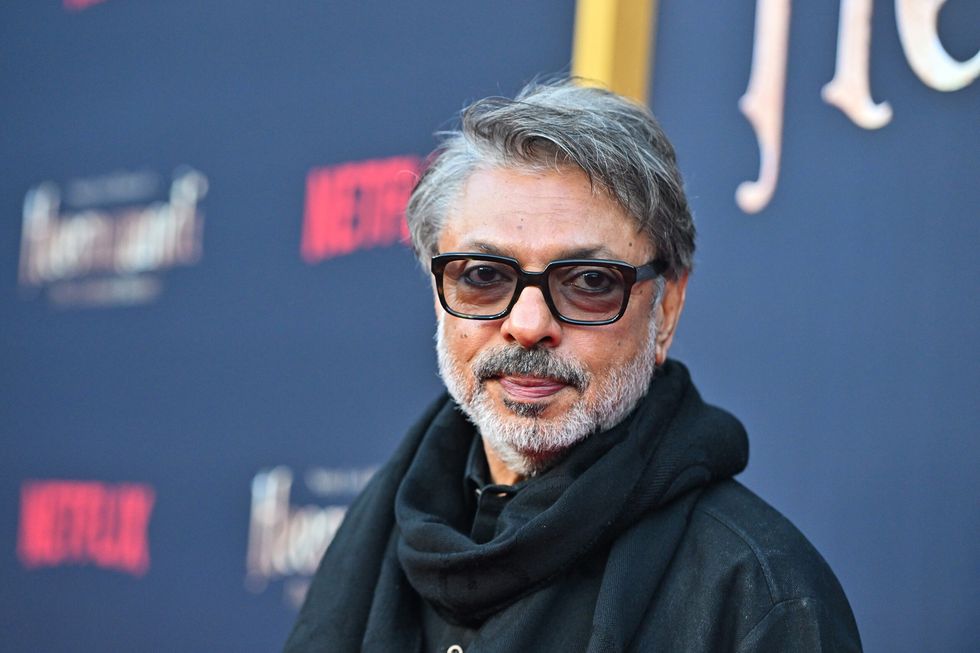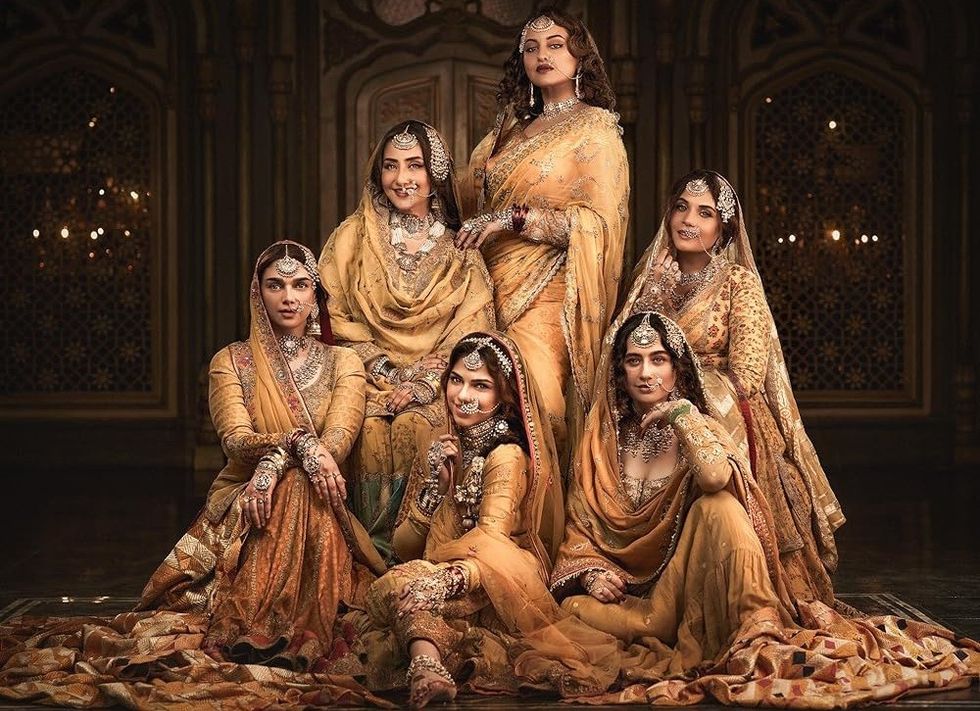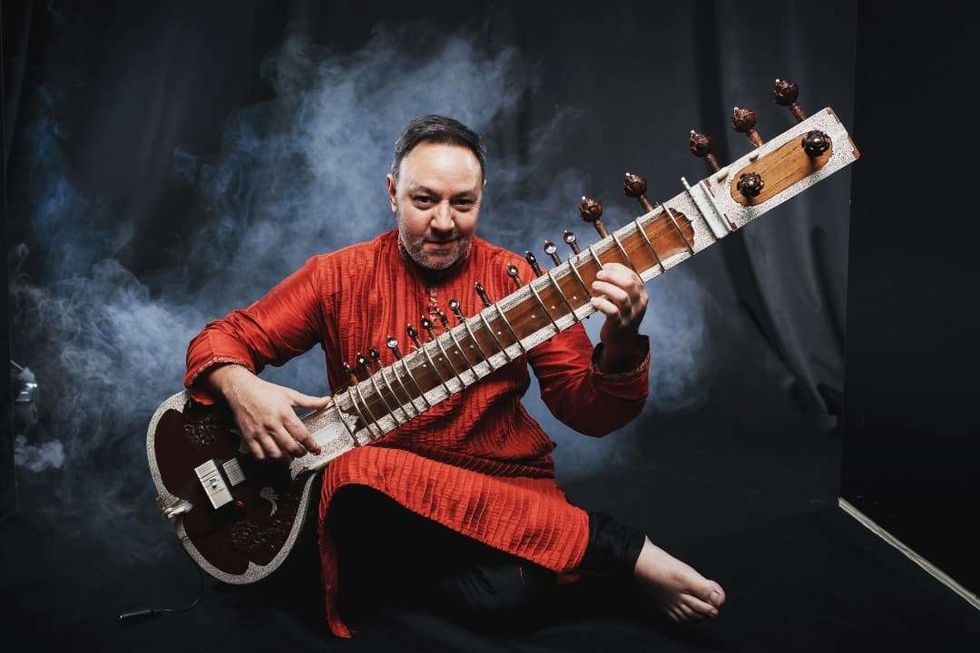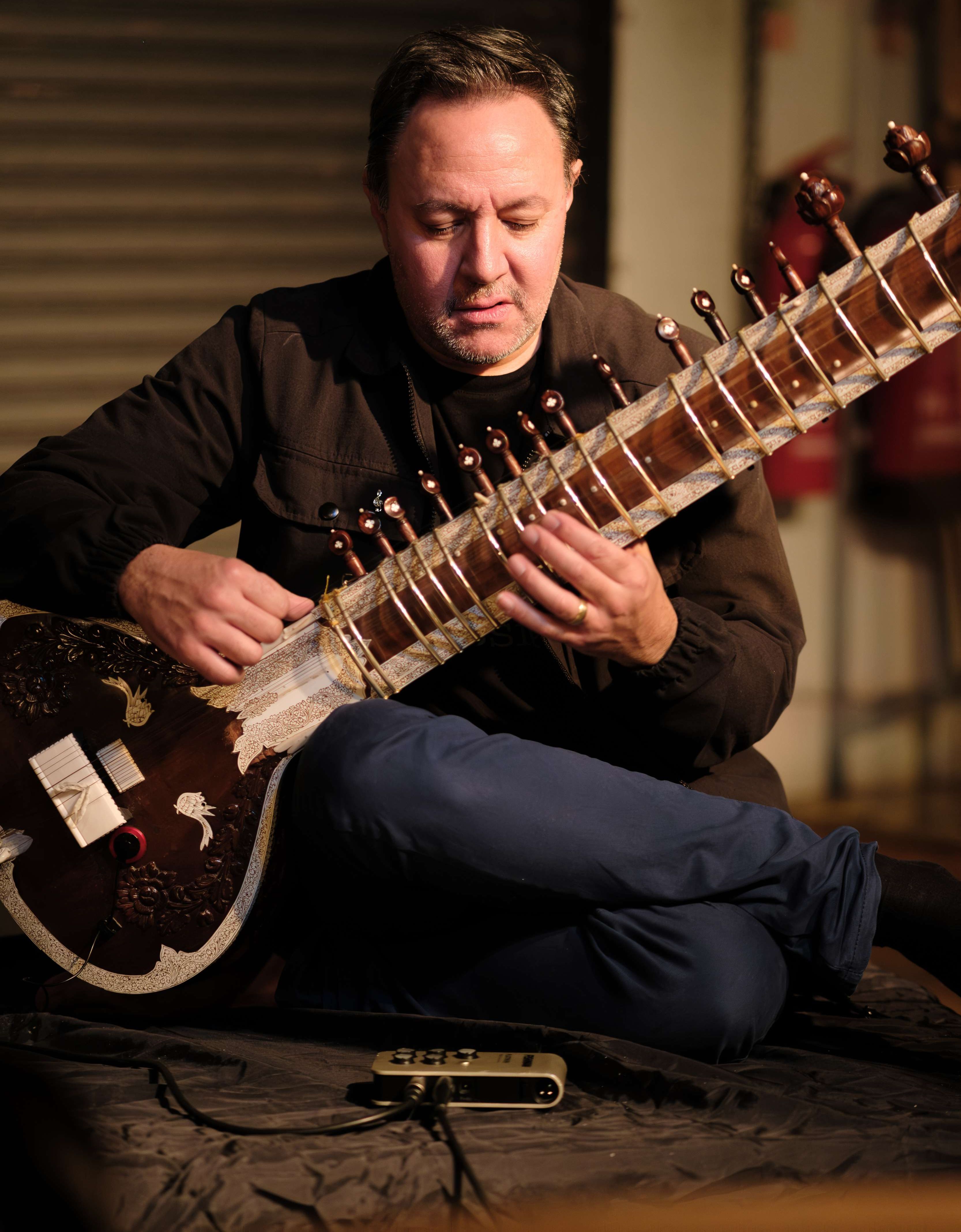REUNITING with acclaimed director Sanjay Leela Bhansali was a key reason for the ensemble cast of Heeramandi: The Diamond Bazaar to come together, the actors told Eastern Eye.
Billed as tale of love, power, revenge and freedom, the series explores the cultural reality of Heeramandi, a district in Lahore, through the stories of courtesans and their patrons and is set against the backdrop of the Indian freedom struggle of the 1940s.
The eight-part series, released on Netflix last Wednesday (1), features Sonakshi Sinha, Manisha Koirala, Aditi Rao Hydari, Richa Chadha, Sharmin Segal, and Sanjeeda Shaikh. Each member of the cast had previously worked with Bhansali.
“We all have tried to do our best, because we were working with a master. To be working with Sanjay 25 years after his first film, Khamoshi, it can’t get better than Heeramandi,” said Koirala, who played the lead role in his feature directorial debut in 1996.
“It’s been a humongous journey, I’ve seen him grow as an artist, as a maestro, as a genius, he is India’s best, he is the greatest filmmaker in India. We are lucky to be working, sweating and trying to perfect our act.”
Koirala was at the top of her game in the 1990s with hit films such as 1942: A Love Story, Akele Hum Akele Tum and Bombay. After a three-year battle with ovarian cancer from 2012-2015, Koirala has come back with supporting roles in films including Lust Stories, Sanju and Shezadah. Heeramandi marks her return as a headline act.
“The turning points for me have been Saudagar, 1942: A Love Story, Bombay and after a long gap I did Company. Now, Heeramandi could be my turning point. I’m keeping my fingers crossed,” she said. “I am extremely keen to have the love and affection of newer audiences as well as to keep the memory alive of my fans, who have seen my past work of 20 or 30 years. They are my inspiration to do better work.”

However, she admitted that after over three decades in showbiz, her focus has shifted. “I would rather have a lot of free time, where I can travel, do gardening, trekking, write a book, binge watch, spend time with family. Do things that interest me, rather than do mediocre projects,” Koirala said.
With Heeramandi, the 53-year-old left a lasting impression on the rest of the cast.
“Manisha is such a wonderful person. The body of work she has behind her, the work she has done and the films of hers we have seen. She is so respected, stunning, beautiful, elegant, just wow,” said Sinha. “But keeping that aside, when I worked with her, I realised she is a beautiful person, just the way she conducts herself on set.
“Watching her and being with her in the same frame was such a pleasure. I hope I can do it soon. It was an honour working with her.”
Sinha is also reuniting with Bhansali after he produced her 2012 hit film with Akshay Kumar, Rowdy Rathore.
In Heeramandi, the 36-year-old said that she has gone against type with her role as Fareedan.
“I’m sampling a dark character for the first time in my career and I’ve thoroughly enjoyed,” she said.
“Fareedan is someone who has all the so-called bad emotions pent up in her – vengeance, rage, she’s borderline evil – but she has her reasons.
“The fact that Sanjay sir, how he portrays women and how he makes even the worst of emotions seem human and natural, for me to play this character became really beautiful.
“When you watch the show, you’ll see whatever Fareedan does, she has a reason for it and the beauty Sanjay sir has created is that people will feel for her, they will understand this is why she’s doing it. For me as an actor, it was a wonderful character to play.”
Having worked with the national award-winning director, Sinha said she has become a better actress.
“I walked away as a more patient and resilient actor. That’s a good thing, and good things take time and greater things take more time.
“To be a part of something like this does require a lot of patience.
“I know I do my job well. Here, you have to mould yourself along with what has been created in front of you, the process of completely surrendering and if you are not able to do that, then you cannot be part of something like this.
“I think I walked away as a much stronger actor after Heeramandi.”
Poster of Heeramandi: The Diamond BazaarHydari, who had worked on Bhansali’s epic love story Padmaavat, gave an insight into how he brings the best out of his actors.
She described her character of Bibbojaan in Heeramandi as someone who is “kind and loyal”, but who has “fire in her belly” towards a larger purpose.
“To explore that dichotomy of grace and fire with a filmmaker like Sanjay sir, it pushed me into places where I didn’t think I could get to,” she said.
“I had a scene where a whole guildhall full of people had to be roused into believing something. He said, ‘Please, I’m giving (you) a lunch break, but don’t eat, I need you to be angry’. It’s interesting little things like that he does to get the best out of his actors.
“I really value that he wrote such a wholesome character and gave me that fire and purpose. I love him and his vision,” she added.
Chadha, who plays Lajjo, said anyone can create beautiful costumes, but only Bhansali can make an actor “take eight rounds, sit and aesthetically drop a tear from the left of one’s eye while wearing a lehenga worth 30 kg”.
“I met Rani Mukerji and (she) said ‘till you work with Sanjay Leela Bhasali, you don’t know your own potential’,” she said.
Bhansali is known for giving women prominent roles in his films such as Gangubai Kathiawadi, Bajirao Mastani, Goliyon Ki Raasleela Ram-Leela, Devdas and Hum Dil De Chuke Sanam.
Heeramandi’s lead actors are six women. Bhansali is one of those few directors whose women-fronted stories have become major box office hits, said Koirala.
“It is a male-dominated society and films are also made like that. One has come to make peace with it. Within the limited scope, we all try to do our best,” she said.
“Being a female actor, we have always somehow been okay with having a second place to the male actors. It is a maledominated industry.
And there are very few filmmakers like Sanjay, in whose films females are the main protagonists and they are mega successes at the box office,” she added.
According to Sinha, the director has managed to tell compelling stories for to all the female characters in the series.
“In Heeramandi, we have six different women with six different stories to tell, and each one has equal importance,” the Dabangg actress said.
“The fact that we are going global with Netflix, being able to reach out to so many people, this is something that everybody should be able to watch. I’m so glad to be a part of it.”







 Jonathan Mayer on the sitar and beyond Instagram/the_sitarist/ @sat_sim
Jonathan Mayer on the sitar and beyond Instagram/the_sitarist/ @sat_sim  Redefining Indian classical music with Jonathan Mayer Akil Wilson
Redefining Indian classical music with Jonathan Mayer Akil Wilson Jonathan Mayer on music without boundaries Instagram/the_sitarist/
Jonathan Mayer on music without boundaries Instagram/the_sitarist/ Jonathan Mayer on teaching and performing Indian music Instagram/
Jonathan Mayer on teaching and performing Indian music Instagram/





